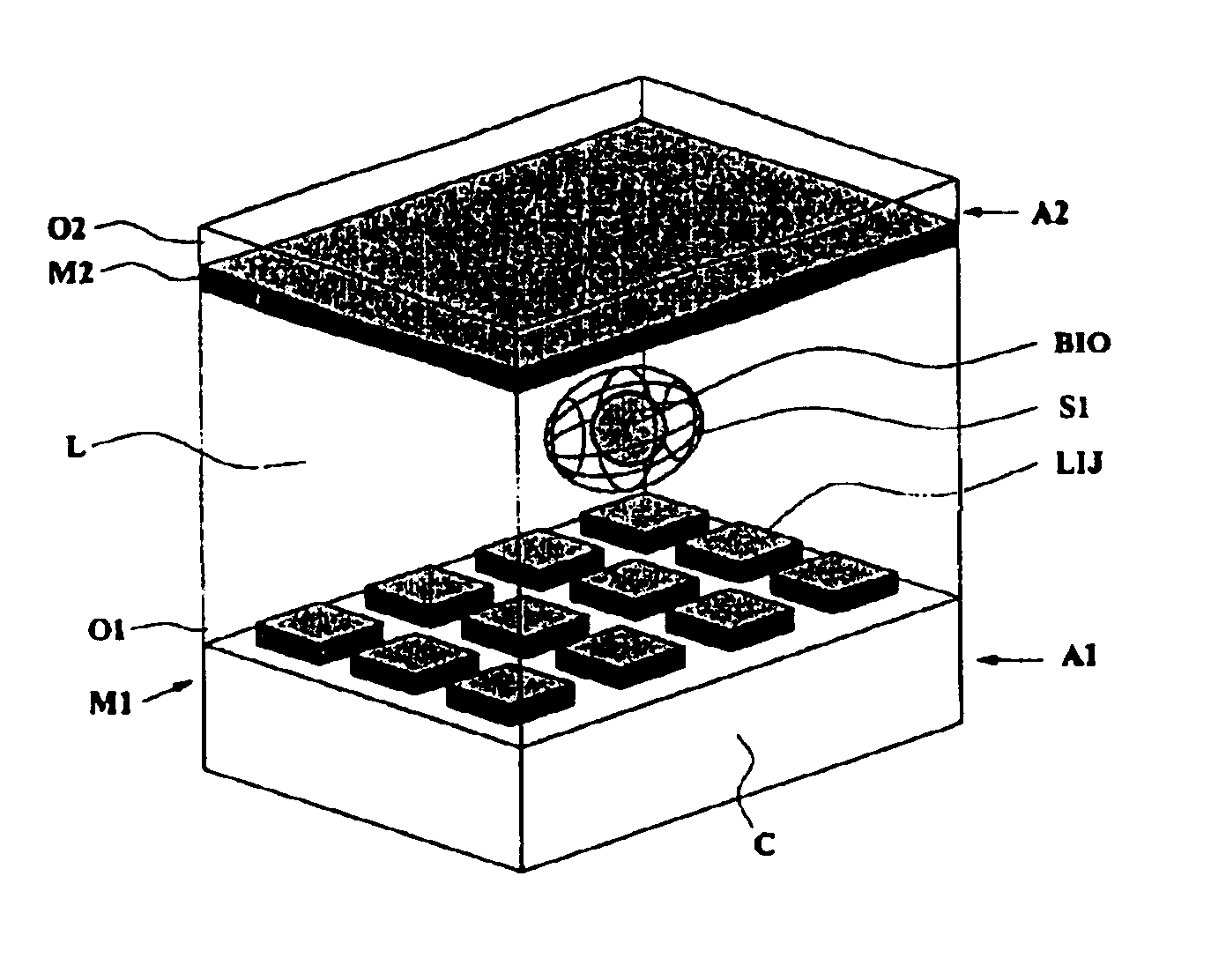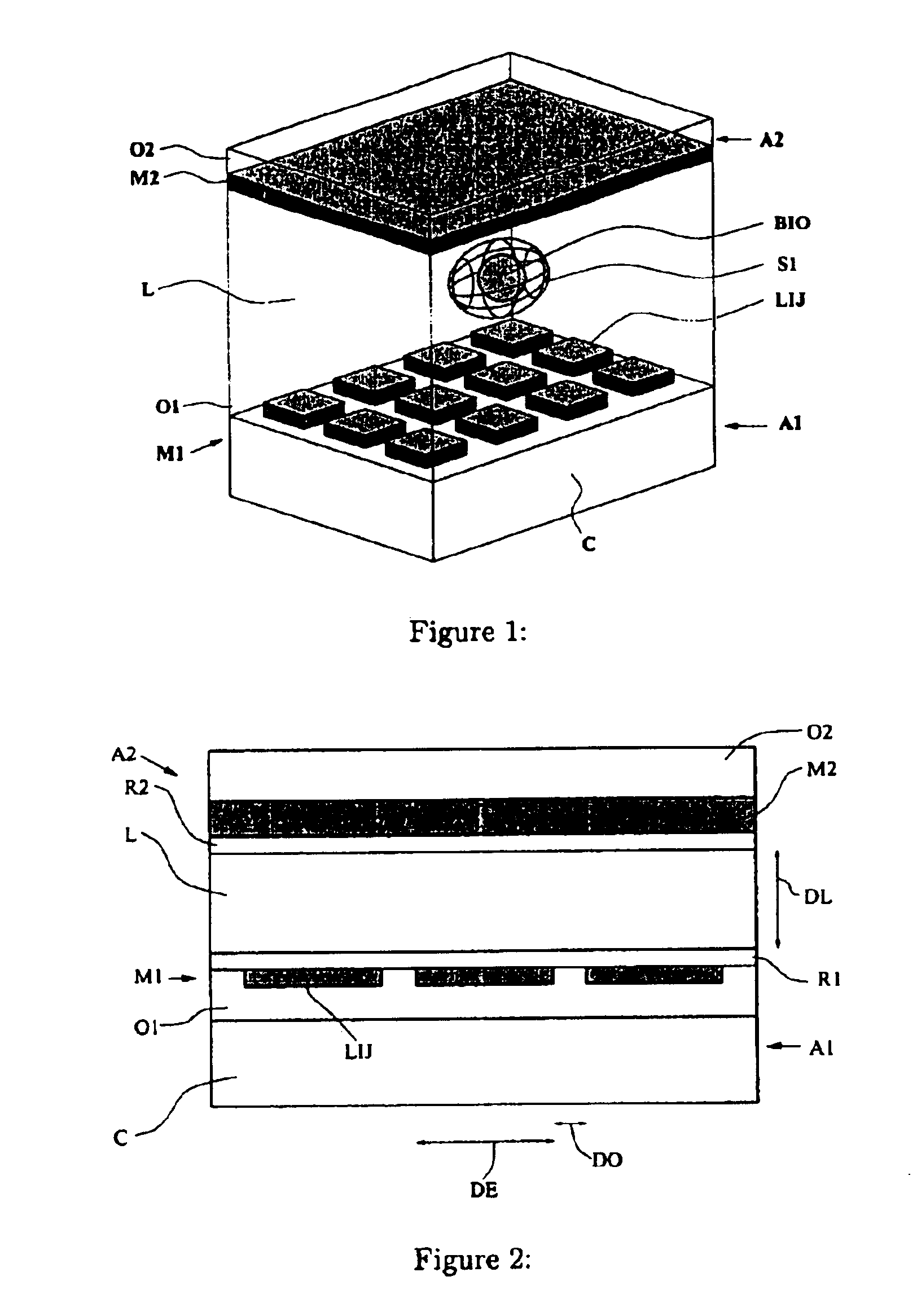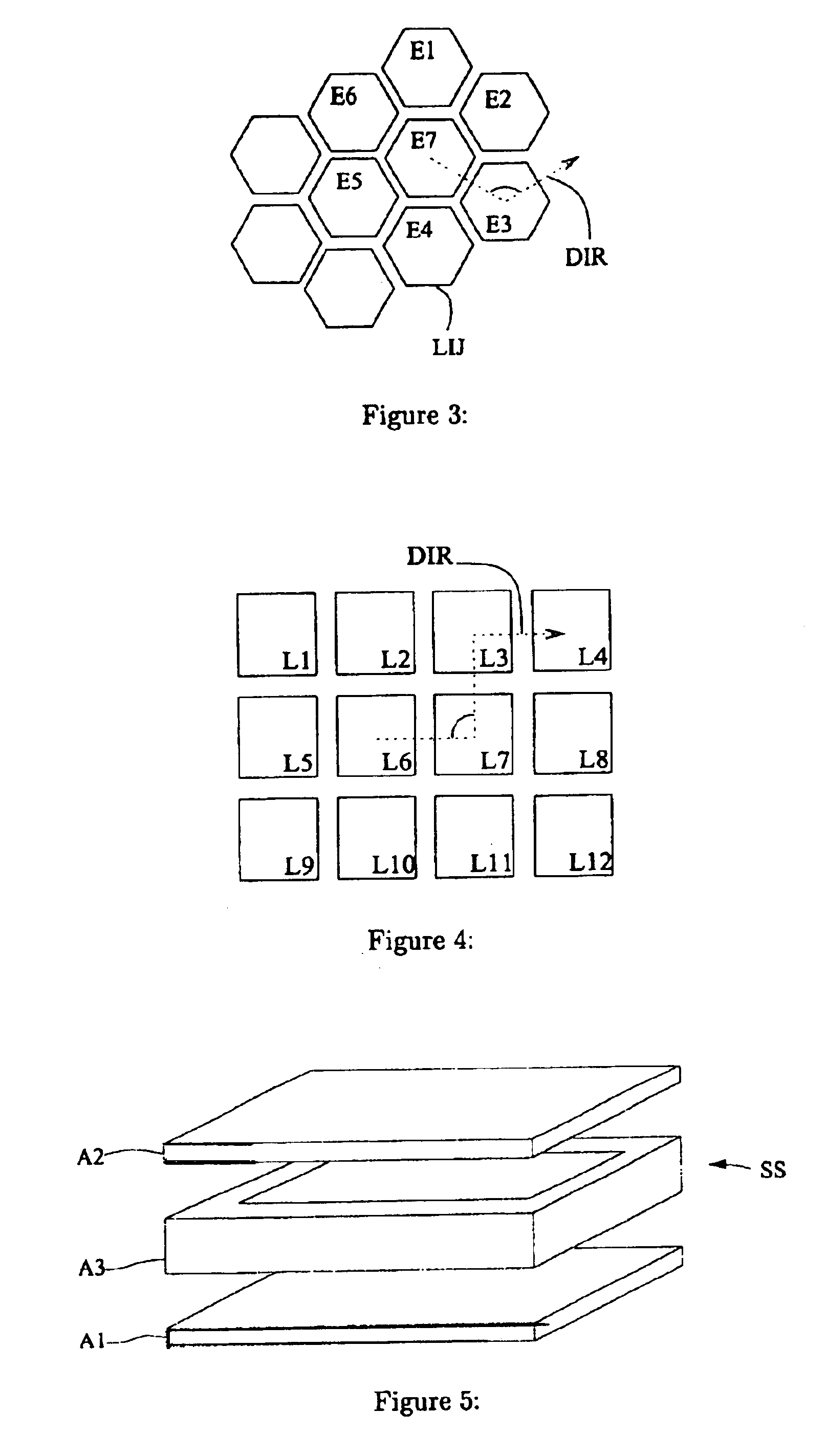Method and apparatus for the manipulation of particles by means of dielectrophoresis
a technology of dielectrophoresis and particle, applied in the direction of electrolysis components, material analysis by electric/magnetic means, solid separation, etc., can solve the problems of compromising the mobility and integrity of mechanical and fluid dynamic microsystems, unable to analyze on a single particle, and unable to achieve the advantages of single particle analysis, etc., to achieve the effect of widening the range of potential applications and users
- Summary
- Abstract
- Description
- Claims
- Application Information
AI Technical Summary
Benefits of technology
Problems solved by technology
Method used
Image
Examples
Embodiment Construction
[0046]The features and advantages of the invention will be clearer from the description of embodiments illustrated by examples in what follows. It is to be understood that examples used herein are for purpose of describing a particular embodiment and arc not intended to be limiting of the spirit of the invention.
Dielectrophoretic Potential Energy
[0047]A dielectric sphere immersed in a liquid at coordinates (x, y, z), and subject to the effect of spatially non-uniform AC or DC electric fields, is subject to a dielectrophoretic force F(t) whose time-averaged value is described by the following:
(F(t))=2πε0εmr3{Re[fCM]∇(ERMS)2++Im[fCM](Ex02∇φx+Ey02∇φy+Ez02∇φz)}. (1)
[0048]where ε0 is the vacuum dielectric constant, r is the particle radius, ERMS is the root mean square value of the electric field, Ex0, Ey0, Ez0 are the electric field component along axes x, y, z, while φx,y,z are the phases of the electric field component and fCM is the well known Clausius-Mossotti factor defined as: fC...
PUM
| Property | Measurement | Unit |
|---|---|---|
| size | aaaaa | aaaaa |
| size | aaaaa | aaaaa |
| size | aaaaa | aaaaa |
Abstract
Description
Claims
Application Information
 Login to View More
Login to View More - R&D
- Intellectual Property
- Life Sciences
- Materials
- Tech Scout
- Unparalleled Data Quality
- Higher Quality Content
- 60% Fewer Hallucinations
Browse by: Latest US Patents, China's latest patents, Technical Efficacy Thesaurus, Application Domain, Technology Topic, Popular Technical Reports.
© 2025 PatSnap. All rights reserved.Legal|Privacy policy|Modern Slavery Act Transparency Statement|Sitemap|About US| Contact US: help@patsnap.com



